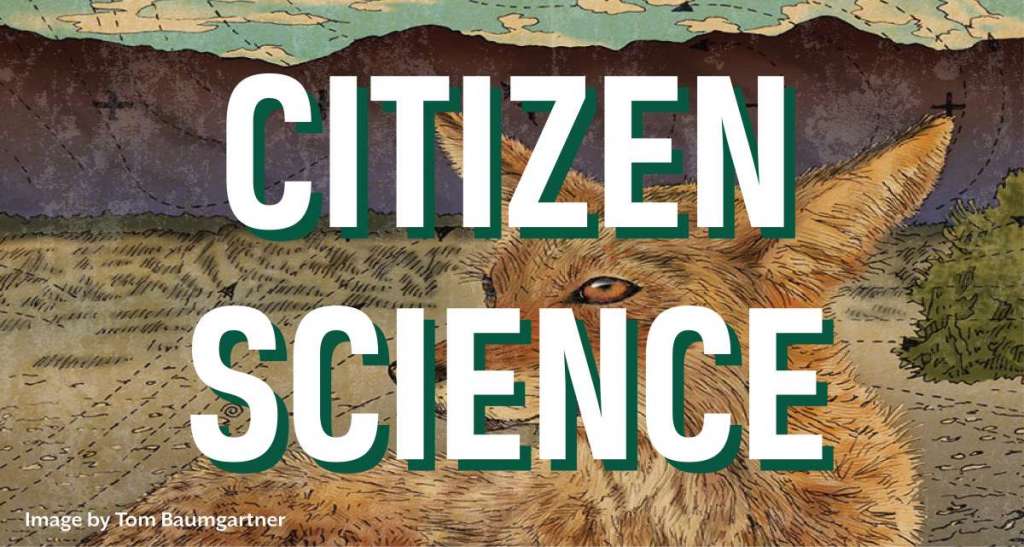For an archaeologist it starts with . . .
A slight depression in the ground or a significant variation in the color of the soil, perhaps even dirt that doesn’t belong. An almost-missed, dusty pottery sherd, partially buried and reveling its stark black and white patterning only when picked up and turned over. A sliver of rock with a sharpened edge that might be man-made. A broken shell, miles from the ocean in the middle of the desert or a turquoise bead not worn in a thousand years.
It ends with “who were you” and “how did you live”?
One small blue bead . . .
A turquoise bead
No larger than
An apple seed . . .
You might not notice
A thing so small.
You might walk by
And not see it at all
Though it shines as blue
As a piece of the sky
And bright as the flash
Of an eagle’s eye.
When men still lived in cliffs and caves
And great beasts roamed the land,
There was a boy who held this bead
Clutched tightly in his hand.
Now it lies forgotten
In the desert sand.
– Byrd Baylor
Day 1 – Getting to Know Archaeology
Why Are There Two Different Spellings?
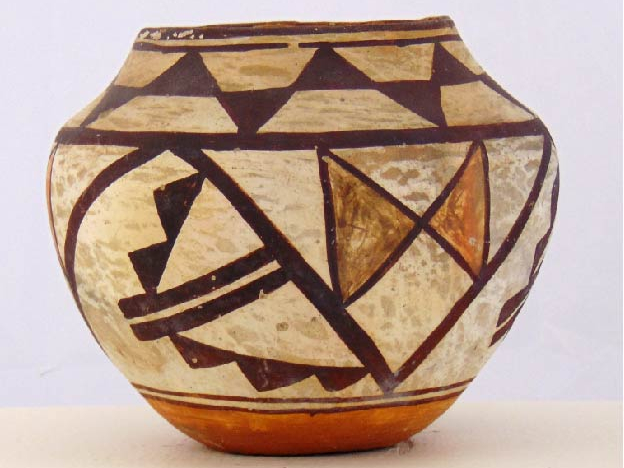
Archeology 101

Archaeological Institute of America

[expand title=”READ MORE ARTICLES” rel=”fiction”]
Types of Archeology

What Do Archeologists Do?
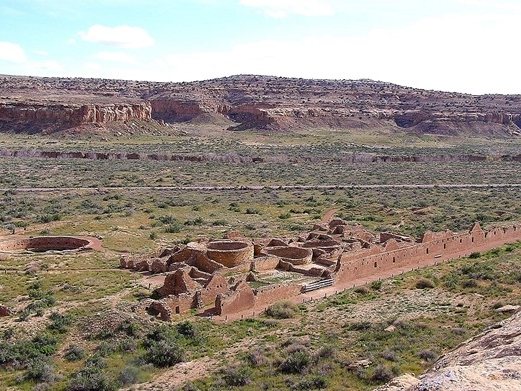
Let’s Dig In

Stratigraphy

Reading Stratigraphy
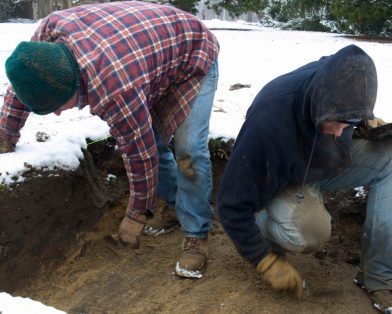
What Do Geoarchaeologists Do?
Rock Art: Heritage

An Introduction to Rock Art
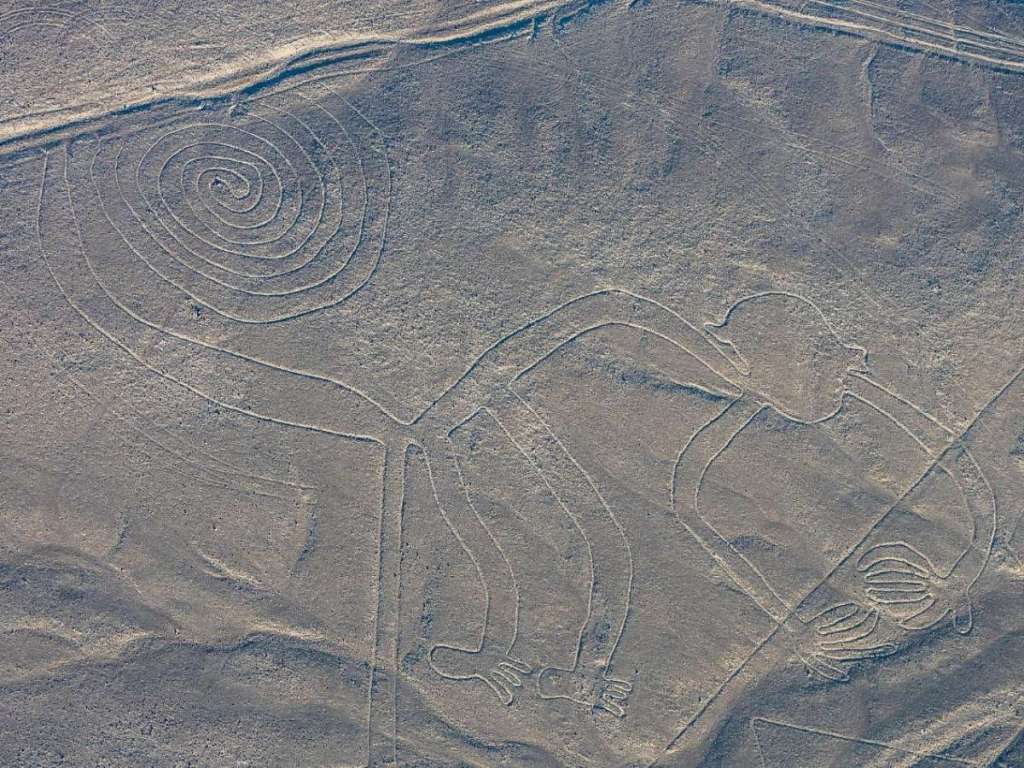
Ancient Cultures

[/expand]
BASICS in Law
National Historic Preservation Act – 1966

The NHPA in Arizona: 50 Years of Protection, 200 Generations of Heritage
[expand title=”READ MORE ARTICLES” rel=”fiction”]
NAGPRA – Native American Graves Protection and Repatriation Act
Carrying Our Ancestors Home
ASM’s History of Repatriation
Repatriation is about Relationships
Collecting Artifacts

No Artifact Appraisals
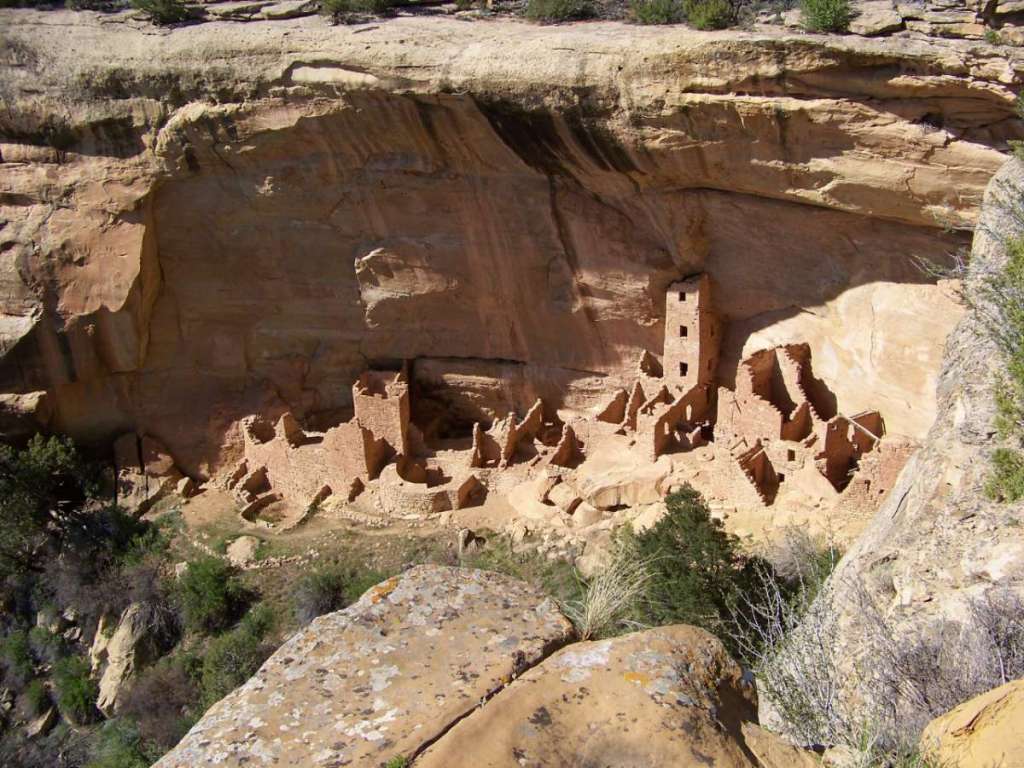
[/expand]
Local Tribes
Hohokam
Who or What is Hohokam?

The Land and The People
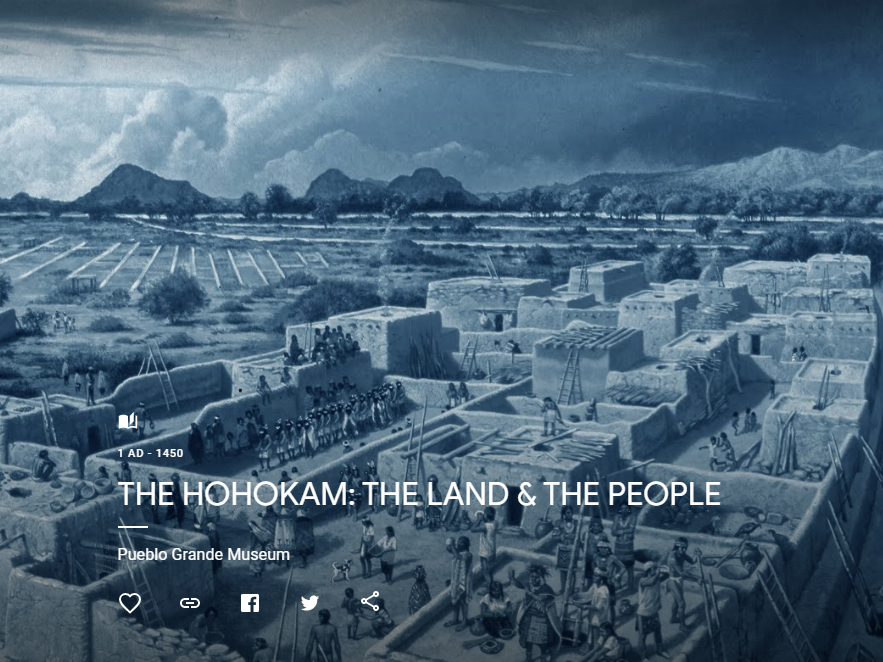
Origins

[expand title=”READ MORE ARTICLES” rel=”fiction”]
Pueblo Grande

Precontact Agriculture
Early Agriculture in the Tucson Basin
Tumamoc Hill: More than a Place for a Good Hike
Archaeology Under the Downtown Streets
Spanish Colonial & Mexican Period Life in Tucson
Hohokam – ‘Skywatchers of the Sonoran Desert’, Wild Visions
American Treasures at Arizona State Museum
[/expand]
Online Books
What is Preservation Archaeology?

Study of Pueblo Pottery

Form and Ornament in Ceramic Art

The Cliff Ruins of Canyon de Chelly

[expand title=”MORE ONLINE BOOKS” rel=”fiction”]
A Study of Pueblo Architecture

1895 Archaeological Expedition to Arizona
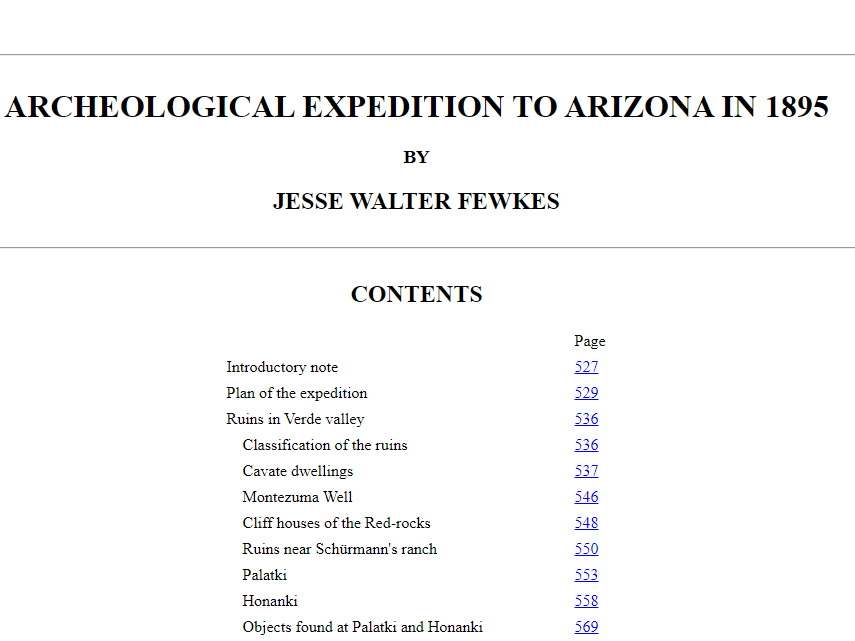
Aztec Ruins

An Introduction – The Idea of the Past
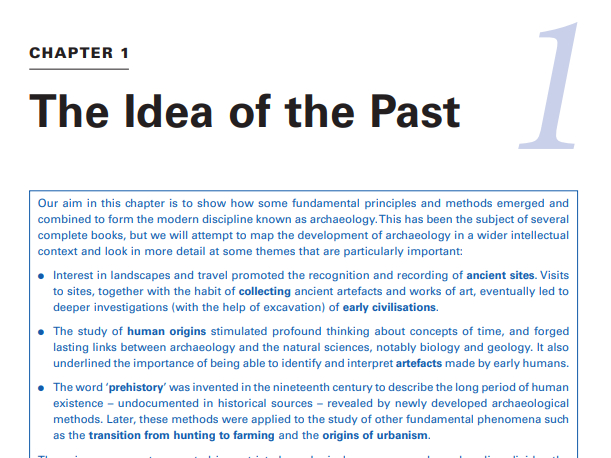
[/expand]
Day 2 – Places and Tools
Casa Grande Ruins
Homolovi State Park
Mesa Verde

[expand title=”MORE VIDEOS” rel=”fiction”]
Mesa Verde Voices – Podcast

Mesa Verde – Balcony House
Mesa Verde – Cliff Palace
Aztec, Salmon, and the Puebloan Heartland of the Middle San Juan
Why Native American Voices Matter
Mimbres: History and Politics, Then and Now
Living in Chaco: Interpreting Chaco
Chaco Canyon #1: Pueblo Bonito and Chaco Culture
Pueblo Bonito History
Adriel Heisey on From Above
[/expand]
Learn How To
Stone Tools

Introduction to Flintknapping
Flintknapping Tools
[expand title=”MORE VIDEOS” rel=”fiction”]
All About Flakes
Reduction
Heat-Treating Rock
Biface Thinning
Pressure Flaking
Pottery
Art from Earth and Fire

Archaeology Café: Pottery…A Direct Link to Our Past
Hohokam Houses
Doorways to the Past
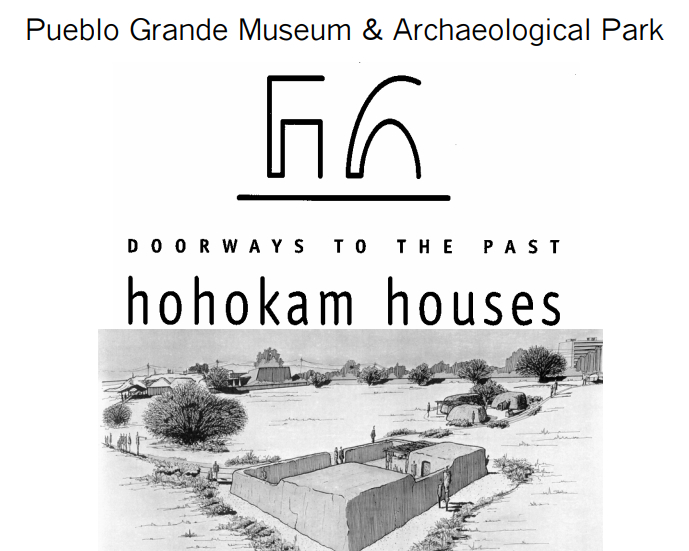
[/expand]
Activity Time
Coconino National Forest

Archaeology for Kids

Art to Zoo

Stratigraphy
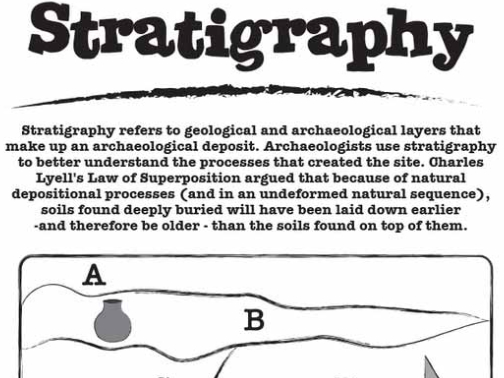
[expand title=”MORE ACTIVITIES” rel=”fiction”]
Cookie Excavation

Learn the Facts

Coloring Sheets

Create a Mini Dig

Stratigraphy

[/expand]
Day 3 – Artistic Expression

Download this week’s coloring sheets dedicated to Archaeology
Get To Know The Artists
Unknown Santo Domingo Artist

Polychrome Pot, Bird Design
The conservative beliefs of the Santo Domingo Pueblo have a strong effect on the images used to design their artwork.
More
Potters are barred from depicting humans and certain animals on their vessels out of respect for the values of their people. Instead, their pottery contains images of birds, flowers, corn plants, scallops, zigzags, and circles. Painted images are often symmetrical and balanced, with the same design easily seen at all angles of the piece. This Santo Domingo pot features a stylized bird design with strong geometric patterns featured on the bird’s tail and breast. The bird motif, painted on two sides of the pot, depicts the bird as a still life with the tail and wings held high and alert while standing on a geometric design, it hints at action, though the bird is not flying.
Please note: this pot is not an archeological find but is being used as an archeological activity tool.
Angelina Herrera
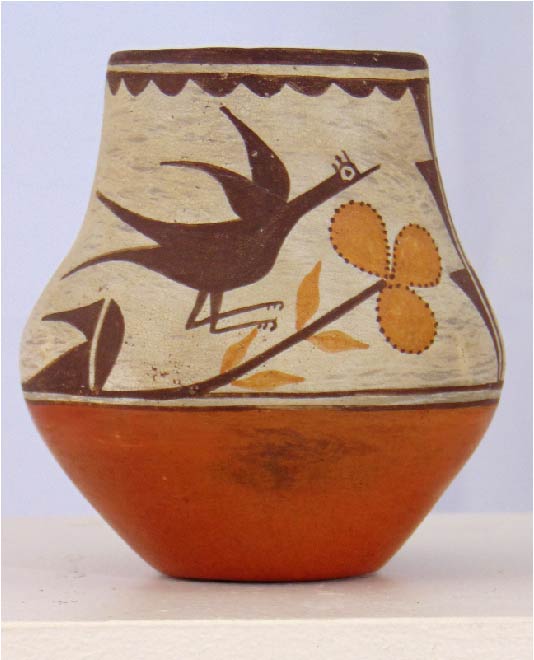
Bowl with Bird Design
Please note: this bowl is not an archeological find but is being used as an archeological activity tool.
Nicholas Quesada

Bird Effigy Jar
Please note: this jar is not an archeological find but is being used as an archeological activity tool.
P. Loretto

Jar with Bird and Feather Design
Jar with bird and feather design by P. Loretto, has a bone-white background, patterned on upper two thirds and top rim painted dark brown feather design.
More
Please note: this jar is not an archeological find but is being used as an archeological activity tool.
[expand title=”MORE ARTISTS” rel=”fiction”]
Unknown Hopi Artist

Yellowware Bowl with Geometric Design
Please note: this bowl is not an archeological find but is being used as an archeological activity tool.
Rebecca Lewis Lucario

Bowl with Geometric Design
Rebecca Lewis Lucario was raised in the Yellow Corn Clan in the old Pueblo village known as Sky City. She learned the art of pottery from her grandmother.
More
Her work is a beautiful example of the white clay creations made from Acoma pueblo.
Please note: this bowl is not an archeological find but is being used as an archeological activity tool.
Unknown Tesuque Artist

Poster Paint Pot
Please note: this pot is not an archeological find but is being used as an archeological activity tool.
Unknown Acoma Pueblo Artist
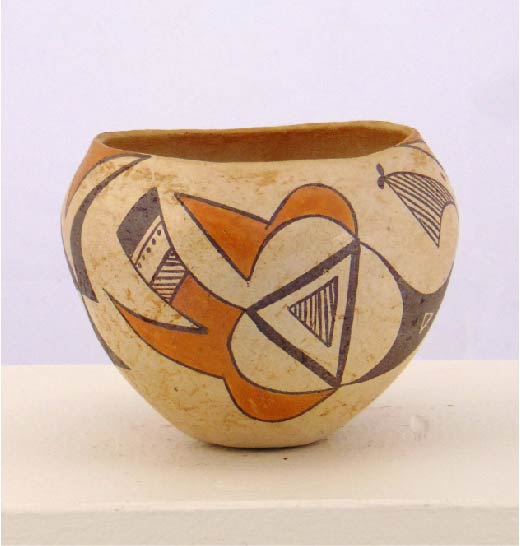
Small Bowl
Please note: this bowl is not an archeological find but is being used as an archeological activity tool.
Unknown Acoma Artist
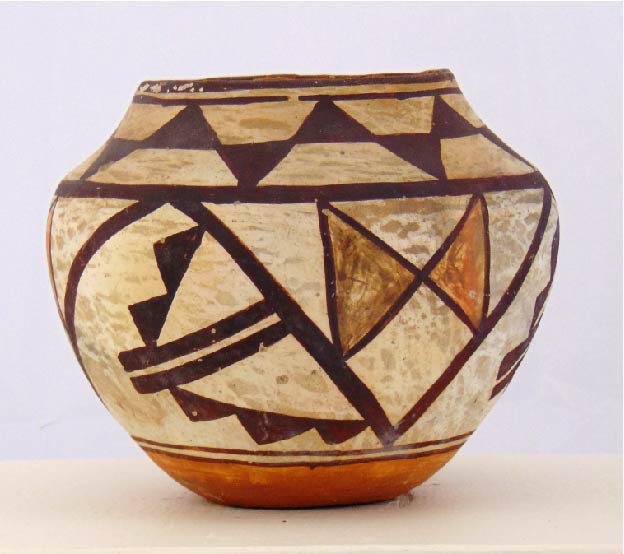
Acoma Pot
From 1750 to the present, Acoma’s standard for fine pottery has been very tourist trade oriented and quality went down because they were so popular they needed to accommodate market.
More
Please note: this pot is not an archeological find but is being used as an archeological activity tool.
[/expand]
Day 4 – Artistic Interpretation
Manuel Fontes

Hohokam Solstice
“It is believed the ancient Hohokam disappeared from Arizona around 1400 A.D. Not much is known about these ancient people. What was their culture like? What was their belief system? On a bright clear winter’s day, deep in a remote area of the Sonora desert, I discovered a cave with a large human figure carved meticulously into the rock. As the sun rose its rays pierced into the cave through a natural opening illuminating the figure and bathing the cave in
More
light. This sudden illumination caused the cave to take on a mystical feeling as if one was witnessing an ancient secret; a long forgotten place of sun worship.”
Angel Luna

Dreams de Pasado
Dreams de Pasado references the rich pottery history of the region and it is covered in petroglyph images. Some of the imagery is for the viewer to interpret, and some is clear like the image of the sun.
Robert Renfrow

Continuum
During the construction of a new road near Tucson, 3,000-year-old footprints were accidentally discovered. Hohokam peoples stepping across their muddy irrigated fields left their footprints close to the Santa Cruz River.
Archeologists were summoned and excavated a relatively small area of the road construction site. Digging revealed many sets of footprints from both adults and children, as well as a dog.
More
After documenting the site, their excavation was reburied and the road construction completed. Part of the general area where these ancient fields were found is now below the new roadway.
I photographed the footprints before they were reburied and then went back after the road was finished to see what still might be there. I came upon a modern boot print in the mud next to the new road and above the ancient fields.
Will this footprint/boot print in turn be buried in our current strata, only to be excavated by archeologists 3,000 years from now as they try to understand our primitive way of life?
Tumamoc Hill
Artist Paul Mirocha


Taking a Place Apart and Putting It Back Together
Ancient ROCK ART
Find prehistoric petroglyphs
Arizona Rock Art
Rock Art Ranch
Great Bend of the Gila River
Contemporary Art
Mind of the Artist | Joe Willie Smith
Effigy Tumuli by Michael Heizer

Earthworks: Grounded in Art

Mimbres Pottery
Native American Pottery Collection Returns To Silver City
The exhibition Decoding Mimbres Painting: Ancient Ceramics of the American Southwest
This exhibition featured over 50 examples of the finely painted ceramic wares produced by the Mimbres people in the region of southwestern New Mexico between 850 and 1150 CE. The hallmark of Mimbres culture are extraordinary black-and-white ceramic bowls, painted with great ingenuity, dexterity, and precision.
The bowls are best known for the variety of animals and plant life that they depict, with a small number of vessels showing human figures engaged in narrative scenes. Alongside these recognizable figurative paintings, Mimbres artists produced seemingly “geometric” designs including zigzags, spirals, checkerboard patterns, and other motifs that appear to have little or no reference to the natural world.
This exhibition introduced the interpretations of longtime artist and observer, Tony Berlant, and scholar Evan Maurer. Their views are informed by scholarship and decades studying Mimbres ceramics, as well as the expertise of collaborators from many different disciplines. They present compelling evidence that the so-called Mimbres “geometrics” were not invented motifs without reference to the natural world, but rather abstracted depictions of various hallucinogenic plants—most commonly Datura—and the brain-generated shapes manifested in the eye as a result of ingesting these plants (often referred to as “entoptic” shapes).
Please be advised that this exhibition contains possible associated burial items.
Introduction to Mimbres paintings
Mimbres style inspires Pueblo art
The people who painted these bowls
[expand title=”MORE VIDEOS” rel=”fiction”]
This painting makes you see not straight
Wind, clouds, and rain in Mimbres paintings
The Bat Bowl
Mimbres Story Bowls
The Design of Meeting Spirals
Mimbres and the greater Mesoamerican trade network
The Life of Mimbres Bowls
The problem with the “Killholes” on Mimbres bowls
The End of The Mimbres Tradition
Pueblo People Making Connection To The Ancient Mimbres
The Skill of Mimbres Artists
An artist’s interpretation of Mimbres geometric designs
Figurative Designs On Mimbres Bowls
Making a Connection To The Painted Images
[/expand]
Reading Recommendations
DECODING MIMBRES PAINTING . Ancient Ceramics of the American Southwest
by Tony Berlant and Evan Mauer

This generously illustrated book explores the pottery of the Mimbres people and offers new insight into its imagery. Named after a valley in what is now Southwestern New Mexico,
More
the Mimbres culture flourished between the 10th and 12th centuries. Through the exploration of paintings on Mimbres bowls, this book offers revelations about the culture’s worldview based on the patterns and shapes depicted in its pottery. Drawing on extensive research as well as photography of the flora and fauna that still thrive in the Mimbres Valley, the authors make the case that the pottery’s beautiful black-and-white paintings and highly intricate designs are abstractions of hallucinogenic experiences. Presenting a distinctive new interpretation of the iconography of ancient Mimbres painted ceramics, this volume addresses Mimbres culture and how this past civilization lived and communicated with the spirit world.
The Rock Art of Arizona | Art For Life’s Sake
by Ekkehart Malotki

With an estimated 6,000 to 8,000 sites spread throughout its canyons, mountains and deserts, the Grand Canyon state of Arizona constitutes one of the premier rock art theaters
More
in the world. Consisting primarily of engraved images (petroglyphs) on sandstone and basalt, but also offering paintings (pictographs) under overhangs, and ground figures (geoglyphs) on desert pavements, Arizona’s rock art truly commands awe and respect. This book, in a comprehensive survey, presents the full gamut of the state’s impressive open-air art from its earliest beginnings until more recent manifestations in the historic era. Though The Rock Art of Arizona contains more than 380 color photographs, over 130 drawings, and numerous charts and maps, it goes beyond the usual bounds of a lavishly illustrated coffee-table book.
In addition to describing the various Archaic and post-Archaic rock art styles and traditions in the state’s fifteen counties, author Ekkehart Malotki focuses on providing insights into what may have compelled Arizona’s ancestral artists to produce the imagery and what functions it may have had in their daily lives. At the same time, he acknowledges the severe limitations of scientifically dating the paleoart, the subjective biases involved in stylistic classification, and the ultimate mystery of its meaning. Within the confines of this explanatory framework, drawing primarily on novel ideas derived from the field of evolutionary psychology and the concept of human universals, he argues that rock art, in a broadly defined context of art and ritual, had beneficial adaptive value in the human struggle for survival and thus can truly be perceived as art for life’s sake.
GEOGLYPHS of the Desert Southwest | Earthen Art as Viewed from Above
by Harry Casey and Anne Morgan

Across the deserts of the American southwest are one of the largest concentrations of geoglyphs outside of Peru’s Nazca Lines. These ancient Native American works of earthen art
More
can be up to hundreds of feet long, and yet are often invisible until viewed from above. Before drones, GPS, or GoogleMaps, photographer Harry Casey began a unique archaeology project. Armed with nothing more than topographic maps, 35mm film cameras, and his beloved Piper J3 Cub aircraft, Casey spent thirty-five years documenting the region’s geoglyphs before natural erosion and human intervention could destroy these fragile sites. Here, for the first time, is a visual record of these beautiful and mysterious, little-known features.
PETROGLYPHS of the SOUTHWEST | a Puebloan Perspective
by Conroy Chino

Petroglyphs of the Southwest offers a unique perspective on the tens of thousands of petroglyphs and pictographs found in national parks in the Four Corners states of Arizona,
More
Colorado, New Mexico, and Utah. Puebloan author Conroy Chino takes the reader on an interpretive journey through these symbolic representations of past and present cultures. Descendants of those who created the carvings in stone still live in the Southwest. Their history, philosophy, religious beliefs, and culture remain deeply connected to the depictions on rocks of deities, rainfall, masked beings, birds, reptiles, and other symbolic figures
[expand title=”MORE BOOKS” rel=”fiction”]
MOGOLLON | Prehistoric Cultures of the Southwest by Rose Houk

Southwestern New Mexico, with its high, grassy desert and rocky rivers, was home to the Mogollon people from about 200 B.C. to A.D. 1450. They are still known for the beautiful black-on-white ceramics they designed and for their village at Gila Cliff Dwellings National Monument. This book depicts their architecture and their pottery while describing what we know of these people of the past.
THE CHACO HANDBOOK | an Encyclopedic Guide
by R. Gwinn Vivian and Bruce Hilpert

Chaco Canyon in northwestern New Mexico contains a remarkable set of Ancestral Puebloan buildings. Occupied between AD 850 and 1150, Chaco appears to have been the cultural and political center for much of what is now the Four Corners region. Many sites in the Chaco Culture National Historical Park have been continuously studied for more than a century. Vivian and Hilpert wrote this encyclopedic handbook to help
More
organize the extensive amount of information available for Chaco, as well as to stimulate speculation and encourage further exploration. The result is a highly accessible but thorough reference.
[/expand]
Day 5 – Weekend Inspiration
Archaeology in the Community
At Home Activities

Potsherds for an Archaeological Dig

Complete the Pattern

Next Week’s Theme
